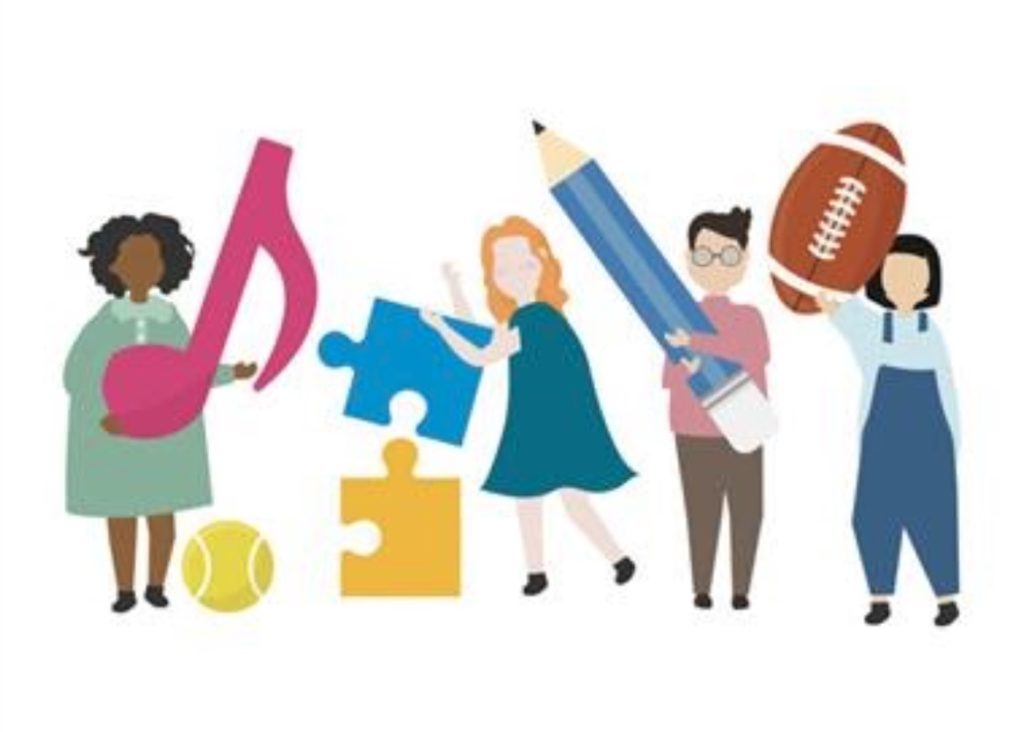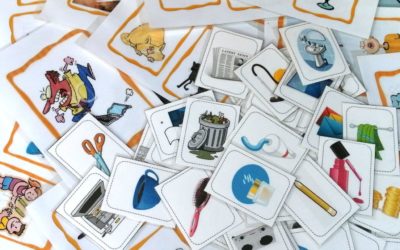1-Flashcard Chain
 To practice simple interaction patterns:
To practice simple interaction patterns:
IN A CIRCLE: ask the students to stand in a circle with you. Have the flashcards ready for the activity. Pass the first one to the student on your left ans ask the question you want using the target language. Example: Do you like elephants? . The student responds ‘yes I do’ or ‘No I don’t’ and passes the flashcard to their classmate next to them, asking the question in the same way. When the flash card you first introduced is about 3 students away from you, then introduce the nextflashcard using questions in the same way.
IN TEAMS: this can be done as a team challenge. Each student of each team has to pass on a question to his classmate who answers and asks the same question to his other classmate…The team that finishes first wins.
2- Categorizing
 Choose a language area the students have seen before. You need at least one flashcard per student (of 16 students, you need 16 flashcards or more). Decide which categories you want the students to categorize the words into. Example: daily life objects???? useful – not useful. / drinks ???? hot drinks – cold soft drinks – alcoholic drinks… Draw large circles on the board accordingly and write the categories under the circles.
Choose a language area the students have seen before. You need at least one flashcard per student (of 16 students, you need 16 flashcards or more). Decide which categories you want the students to categorize the words into. Example: daily life objects???? useful – not useful. / drinks ???? hot drinks – cold soft drinks – alcoholic drinks… Draw large circles on the board accordingly and write the categories under the circles.
Teacher models: Hold up a flashcard and ask the students which word it is. ‘it is a wallet’. Ask them if they think it is useful or not useful.They should say why and give arguments to decide. Example: ‘because it is where you keep your money’. Then stick the card in the chosen circle.
Place the flashcard facedown in a pile at the front of the class, ask the students to come up one at a time and pick up the top flashcard. The class should say the name of the card, then the class should decide which category is the best and explain why. The student at the front then places it in the correct circle.
3-Related Actions
Material: a set of picture cards.
In teams: Each team draws 1 picture card. Then each team has 1 minute to find as many actions (verbs) as they can related to the pictures they have. They write them on a piece of paper.
Example: A CAMERA

- Take pictures
- Be on holiday
- Travel around the world
- Remember my family and friends
- Celebrate a birthday
- Smile
- Perform on stage
At the end of the minute, you collect the lists and give points according to the number of actions found. If some are dubious then you can ask the team to explain their choice and have the other teams vote to decide if they get the point or not.
The next rounds will be made by switching the same cards to the other teams to make it fair or, as you wish, pick new cards for every team.
4-Draw-Mime-Describe
Print out 3 action cards : Draw/ Mime / Describe.



Place them face down in a hat or a basket.
Print out picture cards (objects), as many cards as you want to review.
One player draws an action card and an picture card and has to make her team guess the word by drawing or describing or miming the object accordingly to the Action card.
This should be done in a time limit, the student or the team that can guess in the time limit wins a point. The team or the player that got the most points is the winner;
5-Time’s up
 Time’s Up’ is one of my favorite game as an adult. I love playing it with my family or my friends. This is freely inspired by this game. It works really well with my students.
Time’s Up’ is one of my favorite game as an adult. I love playing it with my family or my friends. This is freely inspired by this game. It works really well with my students.
- Use between 20 to 30 cards (picture cards or word cards) that your students should already know. (a previous step could be to review their knowledge).
- Objective: in each team a student should make their teammates guess what the object or the word on her card is as fast as she can in a time limit.
Round 1: Explain. There is a stack of cards face down. The timer starts set at 30 seconds. The student picks a card and she has to explain what it is, describe it, say how we use it… without saying the word. If no one in his team can guess, she can skip the card and move on to another one…. And so on until the timer rings. The team keeps the cards they have guessed.Then the stack of cards left over goes to the next team who does the same to win cards. When all the cards have been guessed. You move on to the next round.
Round 2: one word: Now the teams know the picture cards (or word cards) better. They proceed to the next round by having their teammates guess the objects by uttering only one word (related to the way they explained the word before). They can skip the cards their teammates can’t guess.
Round 3: act it out: Now the teams have to make their teammates guess the objects by acting out, describing or using the object (they can not show the object if it is in the class, or draw it). The students are not allowed to utter a word, they can only act.
6-Week-end Story
 In teams. Each team picks 5 picture-cards from the stack.
In teams. Each team picks 5 picture-cards from the stack.
These 5 objects are the only objects they have (but as many as they want) to spend the most extraordinary week-end.
They have to create a story and describe their week-end using these objects. They should write their story in the past, in the present, or in the future, depending on what you are currently studying.
Give them 10 minutes to do that.
Collect their papers, read them outloud and the teams vote for the most awesome week-end!





0 Comments